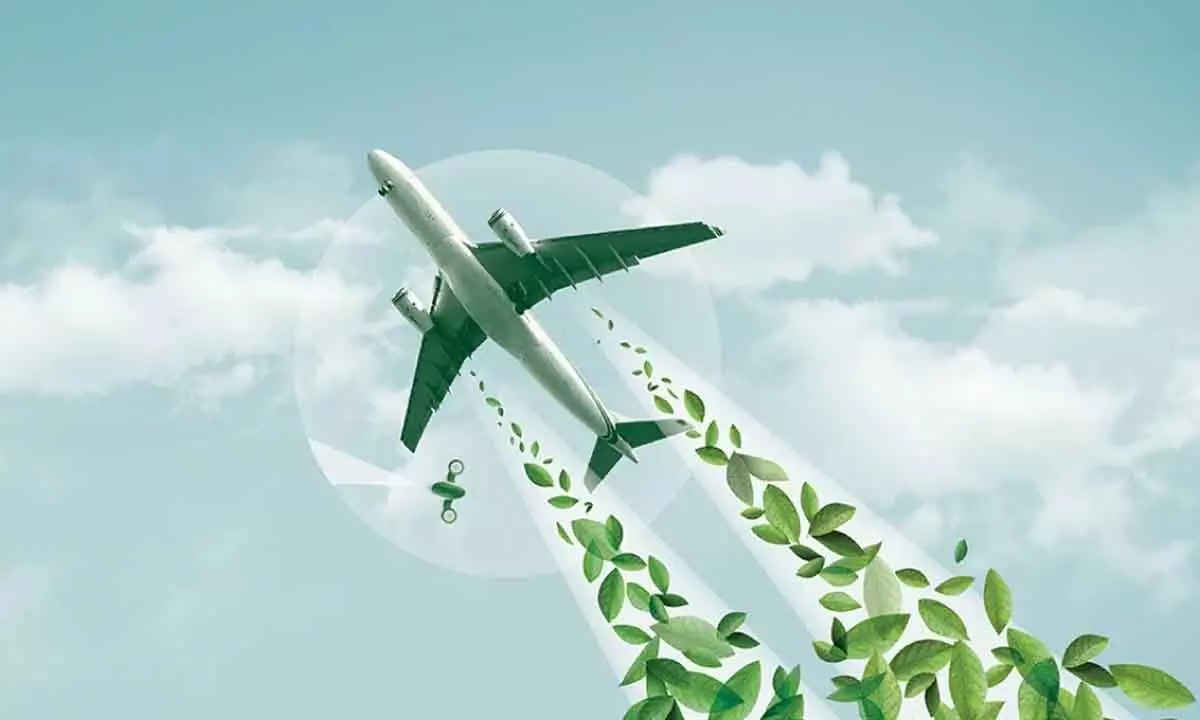Clouds clearing up for aerospace sector

According to a report by Accenture, the implementation of digital technologies in the aerospace industry could result in cost savings of $30 billion per year by 2030. Diversification of suppliers is expected to continue as a trend in 2024, with more aerospace companies exploring new sourcing options and building more resilient supply chains. This trend is also expected to drive innovation and competition in the aerospace industry, as new suppliers enter the market
Despite the ongoing supply chain challenges, aerospace and space industries are set to soar next year. IATA has estimated that the global airline industry is expected to return to profitability in 2023, reaching $ 5 billion in profit. Accenture has reported that the Maintenance, Repair, Overhaul (MRO) segment recovery is expected to stay steady through 2023, with most executives anticipating MRO budgets will stay the same or increase in the next 24 months.
Heading above the atmosphere, the global space market has grown to approximately $ 447 billion, up from $ 280 billion in 2010, and is estimated to reach $ 1 trillion by 2030, according to a report by McKinsey and World Economic Forum.
In a survey conducted by Gartner, 47 per cent of aerospace and defense companies reported a supply chain disruption in the past 12 months, with an average cost of $184 million per disruption. The most common causes of the disruptions were demand volatility, transportation disruptions and supplier bankruptcy.
The aerospace industry is also facing sustainability and environmental challenges. According to the International Air Transport Association (IATA), the aviation industry accounts for 2 per cent of global carbon dioxide emissions. As a result, manufacturers are under pressure to reduce their carbon footprint and adopt sustainable practices throughout their supply chains.
Digitalization and automation enable companies to gain real-time visibility into their supply chains, optimize inventory management, reduce waste, and improve efficiency. For example, Airbus has implemented a digital supply chain platform called Skywise, which uses big data analytics and machine learning to optimize maintenance, reduce downtime, and improve operational efficiency. By 2024, Airbus aims to have 30,000 aircraft connected to Skywise.
The adoption of digitalization and automation is expected to have significant benefits for the aerospace industry.
According to a report by Accenture, the implementation of digital technologies in the aerospace industry could result in cost savings of $30 billion per year by 2030.
Diversification of suppliers is expected to continue as a trend in 2024, with more aerospace companies exploring new sourcing options and building more resilient supply chains. This trend is also expected to drive innovation and competition in the aerospace industry, as new suppliers enter the market.
Sustainability and environmental responsibility are becoming increasingly important for the industry, as customers and stakeholders demand more eco-friendly and sustainable products and practices.
According to a report by McKinsey, the aviation industry could reduce its carbon emissions by up to 80% by 2050 through the adoption of new technologies and sustainable practices.
In response to this trend, many aerospace companies are investing in sustainable practices and technologies throughout their supply chains. For example, Boeing is exploring the use of biofuels and electric propulsion systems in its aircraft, while Airbus has set a target of reducing its carbon emissions by 50% by 2030.
Sustainability and environmental responsibility are also becoming important for investors, as more funds are incorporating ESG (environmental, social, and governance) criteria into their investment strategies. According to a report by Morningstar, global sustainable fund assets reached a record $2.7 trillion in 2020, up 96% from 2018.
Going into 2024, these trends will receive an extraordinary increase in capital expenditures, which require supply chain leaders to begin quantifying potential initiatives. Within the industry, the following business opportunity costs can be quantified in the following categories: Digitalization and automation: Reduction in lead times, improvement in on-time delivery, increase in productivity and decrease in operational costs.
Diversification of suppliers: Reduction in supply chain disruptions, improvement in supplier collaboration and increase in supplier innovation. Sustainability and environ responsibility: Reduction in carbon emissions, increase in use of sustainable materials and improvement in energy efficiency. The aerospace supply chain in 2023 faced significant challenges due to the Covid-19, geopolitical tensions and natural disasters. However, the industry is expected to recover in 2024 and continue to grow, driven by trends like digitalization and automation, diversification of suppliers, and sustainability and environmental responsibility.
To succeed in the aerospace industry, companies need to adopt a more agile and resilient approach to their supply chains, leveraging digital technologies, collaborating with suppliers, and embracing sustainability and innovation from next year. This can reduce costs, improve efficiency, and create more sustainable and responsible products and practices.
Technological advances in the aerospace industry improve sustainability, digitize legacy systems, and automate processes. Further, additive manufacturing enables rapid part development and the use of novel materials while satellite technology miniaturizes cost-effective satellites.
On the other hand, blockchain improves security and transparency in aerospace operations.

